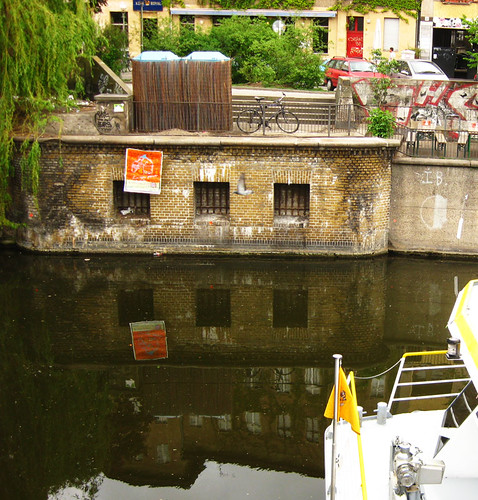




So, normally I don't think its necessary to explain artwork - since you, as a product of this new mediascape, are so versed in media that you either like it or you don't and I trust your judgment - but I was asked by someone I know to do so... so I will. And here goes:
First, the title is taken from Goya's work but the date and place are changed. Lot of the significance of doing artwork in the street is related to this time of year & relevantly I am thinking a lot about Goya's series of etchings Los Desastres de la Guerra. I first saw them while living / studying in the Provence and this collection of works (which I saw in a semi-private collection) is one of my favorite and one of the more emotionally provocative series of works. And you can see them here: http://en.wikipedia.org/wiki/The_Disasters_of_War
The black text reads:
My barrow run a flat tire & i ain't
got nuthin' but bricks to move - wet
cement - peanut butter on the roof
of my mouth - buying a dollar's worth a
fat & blood - & laying forty-two cents down
in a chocolate man's Mrs Winners cup -
the black woman with a white mouth &
a stolen bicycle - do you hear
the rooster crowin'?
-i dont really believe in all this shit
anyway.
The blue text reads:
Las mujeres preparaban la chicha.
PARA
EMBA
RAZAR
The first line of the blue text means:
The women prepare the chicha (a strong alcoholic beer in ecuador - often drunk in great quantities around the solstice on June 21 or so).
The second line meas:
To impregnate (themselves)
Black Text:
So, the black text is representative of my life in the South, the religious and racial tensions, and the growing discrepancy between the rich and the extremely poor. It seems that often in my life I found myself pushing a wheel barrow with a flat tire filled with bricks and solidified wet cement, something I always hated doing. But it's also a metaphor for life and the difficult situations we all go through, suffering. And it's like peanut butter on the roof of my mouth, sticky, a product from the South, but somehow wonderful just the same. There were a few years when I would use fat and blood in my artwork and was always surprised about how inexpensive fat and blood packages were in Savannah, Georgia. Often after buying things like that I would be asked for change and I recall one man asking for forty-two cents. Another time in Savannah a woman who had been using too much crack and had stolen a bicycle asked me to help her because she did not know how to ride a bicycle. And I don't mean that she simply had no experience, I mean that she was confused as to where to sit, which direction it would go in, and whether it was a horse or something. Anyway, she had used too much crack at the time. And then I leave it with a question about whether or not you can hear the rooster crowing. It's just a thing. I mean, the South is known for its roosters, chickens, and maybe my words - at least for me - they sort of bring together all of these feelings I have about the South, the people, the culture, race relations, economic disparity, etc. And then I end with a general feeling I have that sometimes it all just seems unreal, surreal, maybe an illusion or a dream.
Blue Text:
So this is sort of how I feel about the intellectuals who come from South America, specifically the Peru / Ecuador region. And I feel that they, along with just about everyone else, look contemptuously upon the people who have been there longest, the Inca, Quechua, or just anybody living on the land. Anyway, it's a quote from a Peruvian intellectual and exile I met a while back. Nice guy.
So, ... I'm tired of writing now so I'm going to stop. (I didn't write about the finished work or public space because ...wtf, who's going to read this anyway)
